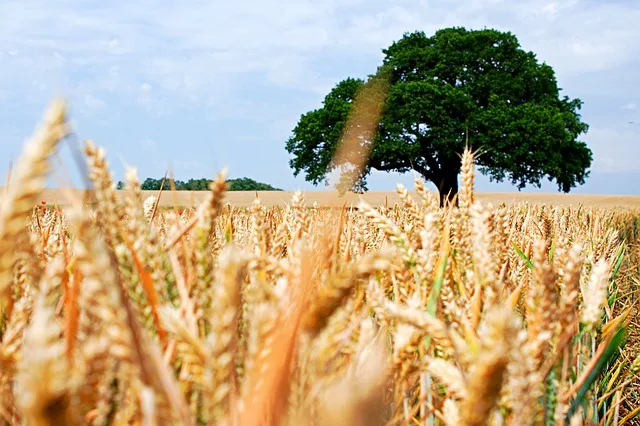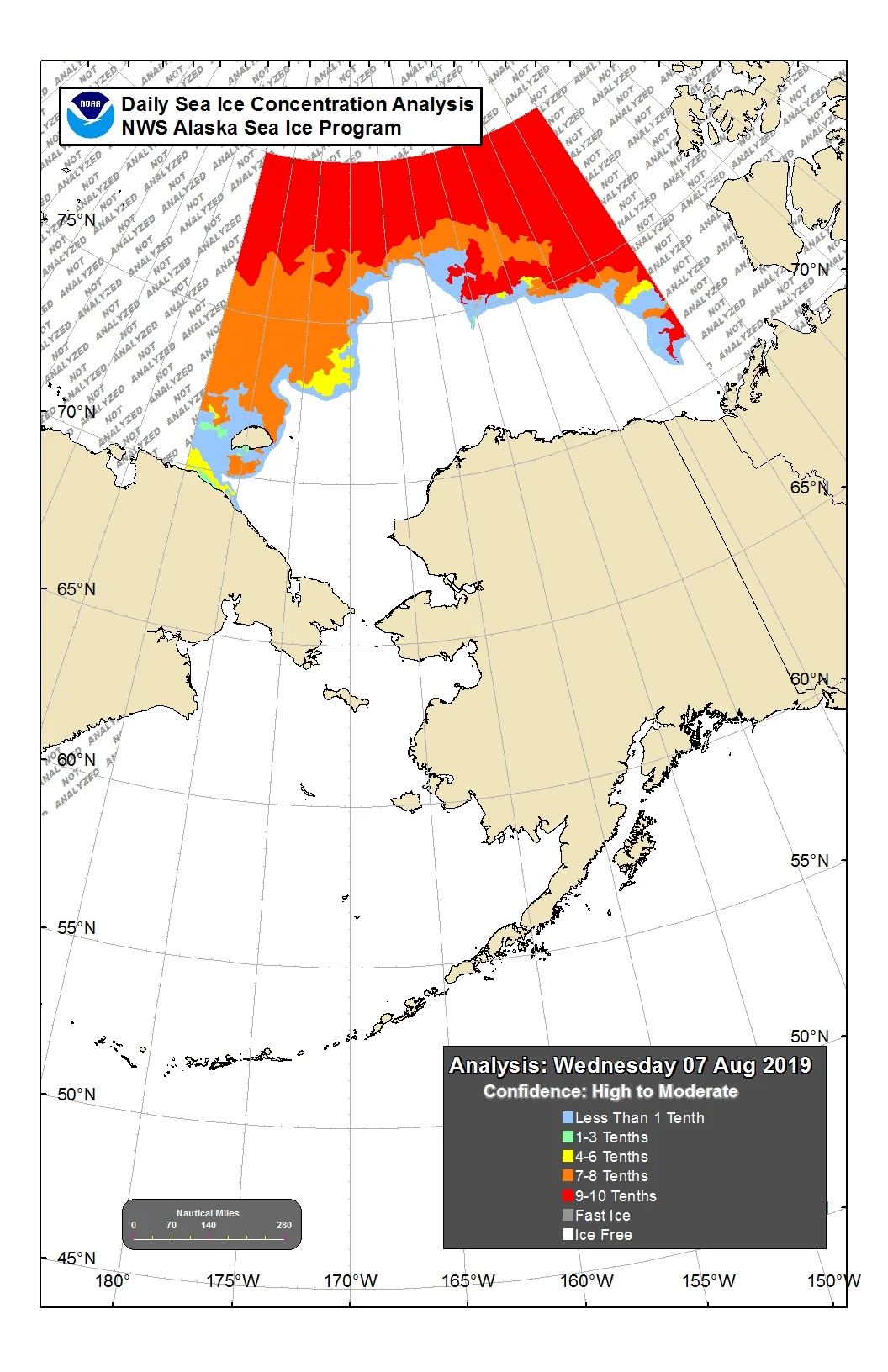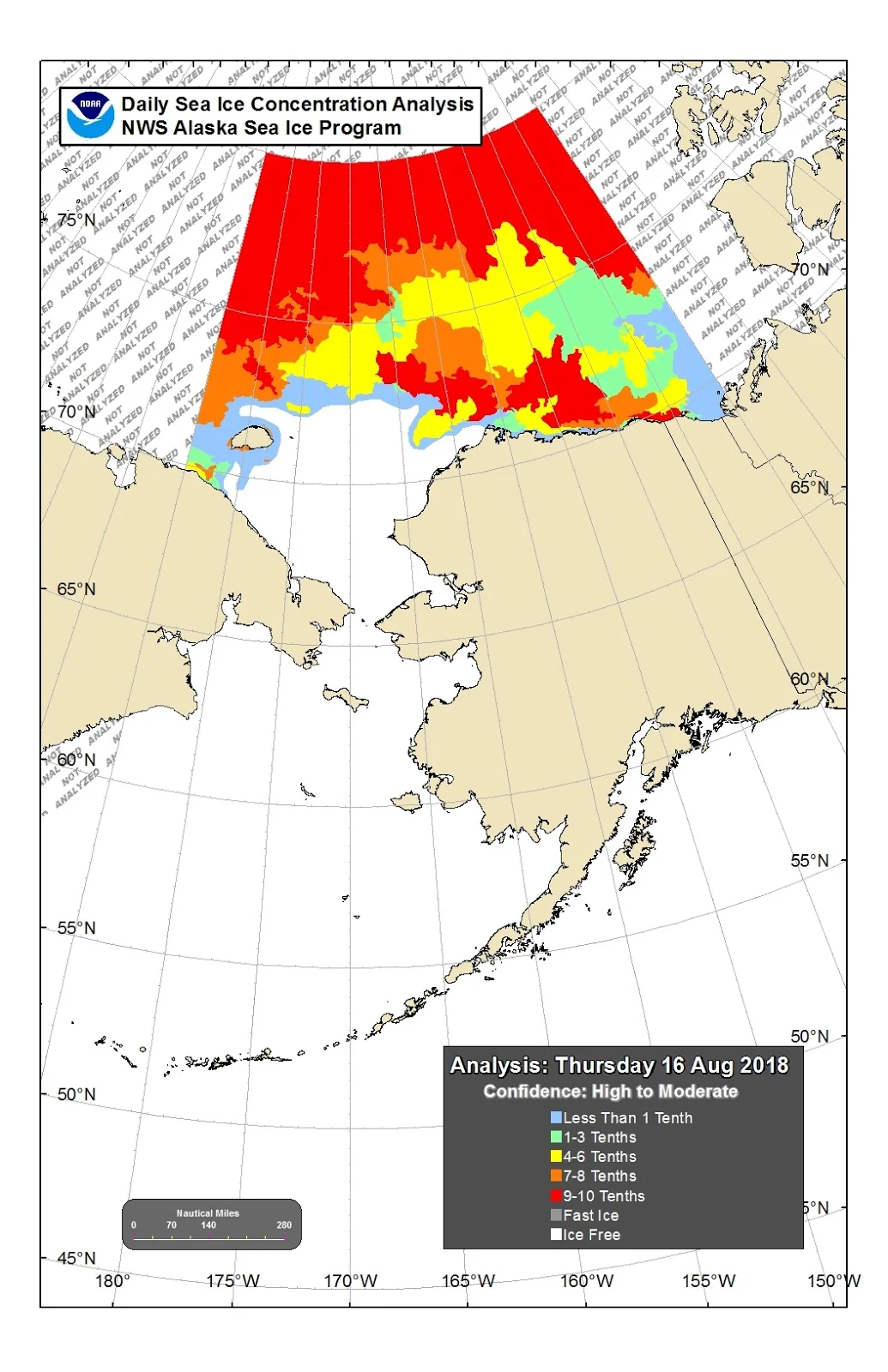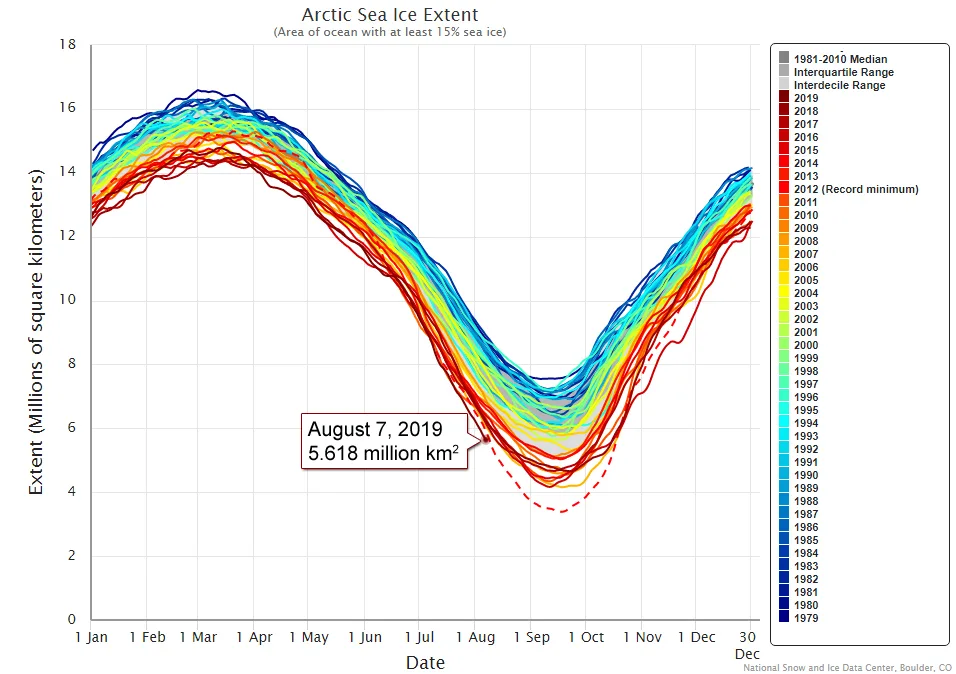
Global food chains vulnerable to disruption by climate change extremes
What's Up In Climate Change? Increased extreme weather is making global food chains more vulnerable to disruption, Alaska's waters are ice-free, and Arctic sea ice is setting records.
A new UN climate report is highlighting the importance of sustainable agriculture and reforestation for stabilizing our climate, and just how vulnerable the global food web is to the increase in extreme weather events.
On Thursday, the Intergovernmental Panel on Climate Change (IPCC) released their special report on Climate Change and Land. Two years in the making, the report compiles the knowledge from over 7,000 research studies, with over 100 leading scientists contributing from 52 nations around the world, to detail how land-use affects the climate, and how climate change is affecting the land.
According to the report, since pre-industrial times, temperatures specifically over land have warmed at twice the rate of the global average temperature. While the observed global average surface temperature has increased by 0.87°C over the past 150 years or so, land-only surface temperatures have increased by 1.53°C.
Given that we live on the land, as well as grow much of our food there, this difference becomes very important when it comes to how we are being impacted by these temperature increases, and how increases in extreme weather events brought on by these warming temperatures - floods, heat waves and droughts - are affecting our available agricultural land, our crop yields, and our food supply chains.
With increasing air temperatures comes a greater capacity for that air to hold water vapour, which, in turn, leads to more frequent and more intense rainfall events. This can overload the land's ability to absorb water, especially after repeated events, resulting in over-land flooding. Crops can be directly damaged by this flooding and livestock can be lost, but this can also degrade the land usefulness for agriculture through soil erosion, as vital topsoil is washed away.
Heat waves and droughts contribute to water scarcity and vegetation loss, increase the threat of wildfires, cause permafrost thawing and can even cause heat stress to crop plants, thus impacting crop yields.
"Food security will be increasingly affected by future climate change through yield declines - especially in the tropics - increased prices, reduced nutrient quality, and supply chain disruptions," Priyadarshi Shukla, Co-Chair of IPCC Working Group III, which assesses options for mitigating climate change through limiting or preventing greenhouse gas emissions, said in an IPCC press release on Thursday.
This impact of extreme weather events is projected to cause an increase of 7.6% in the price of cereal grains by 2050, the report notes, but it could be as high as 23%. This would lead to higher global food prices, increasing the risk to food security, and it is the most vulnerable people in the world - those in developing countries - that would be more severely affected.
There are methods of land-use that can reduce these impacts, however. Shifting away from fossil fuels is still the key issue. Halting deforestation and supporting reforestation or afforestation projects would help tip the balance back, however, allowing the land to take up more carbon dioxide and release less greenhouse gases. Changes to what we grow for food and how we grow it, as well, for more sustainable agriculture practices, make our food chains more resilient.
To read the full report, head to the IPCC website.
ALASKA'S WATERS ARE COMPLETELY SEA ICE-FREE
Remember when we reported that Arctic waters were actually warmer than some of the Great Lakes?
This has taken its toll on sea ice around Alaska. As of this week, there isn't any ice detected within 240 km of its shores!

Sea Ice Extent near Alaska and the Beaufort Sea, August 7, 2019. Credit: NWS Alaska
Compare this to last year, in 2018, when even a week later than the above map, on August 16, there was still plenty of ice floating in the Beaufort Sea, along the north coast of Alaska.

Sea Ice extent for August 16, 2018. Credit: NWS Alaska
2017 was another year with very little ice around Alaska, but it wasn't this bad, this early in the month, as this tweet from August 5, 2017 shows (with NWS maps for 2017 and 2016 ice at this time of year).
ARCTIC SEA ICE TRACKING AT LOWEST EXTENT ON RECORD
Along with the extreme retreat of ice from Alaska's shores, the entire Arctic is seeing its lowest sea ice extents in the satellite record.
According to the US National Snow and Ice Date Center (NSIDC), sea ice across the Arctic was measured at 5.618 million square kilometres, on August 7, 2019. That's 150,000 square kilometres lower than on the same day in 2012, which is the same year we saw the lowest Arctic summer sea ice extent on record.
As the NSIDC reported this week "By the beginning of August, the pace of ice loss tends to drop rapidly. 2012 was an exception, when the average August ice loss rate remained quite rapid at 89,500 square kilometers per day (34,600 square miles per day), leading to a new record low for the September minimum that year."

The latest record of Arctic sea ice shows the daily trend tracking below the 2012 extreme minimum. Credit: NSIDC
Based on just the first week of August 2019, the rate of sea ice loss in the Arctic is running at around 100,000 sq km per day, which is roughly the same rate that was seen at the same time in 2012. If this continues, we could be seeing a new record lowest summer Arctic sea ice extent by the time we reach the summer minimum in September.
Sources: IPCC | CBC/Reuters | Mashable | NSIDC







